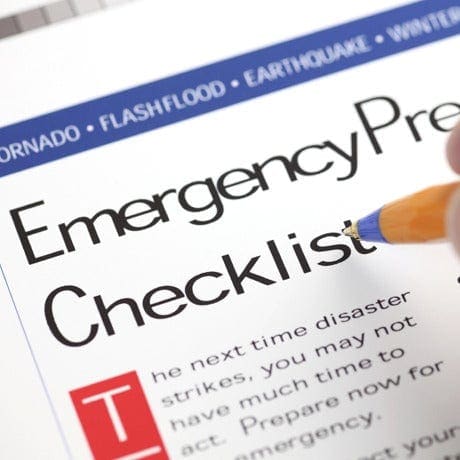By Anthony Hernandez, Defense Credit Union Council
“A good plan, violently executed now, is better than a perfect plan next week.” – General George S. Patton
General George S. Patton was a brilliant battlefield commander during World War II. His genius was his unique ability to make quick decisions of enormous consequence based on limited information and under extremely short timelines and combat duress. If he failed to decide quickly and then act, he would have lost the ability to maneuver the United States Third Army into situations to defeat the enemy. General Patton always focused on the offensive.
Making decisions is easier if you know all the facts. However, waiting for the perfect set of inputs can immediately put you in a defensive situation, from which it is hard to recover. Unfortunately, situations are never perfect, especially during times of crisis. There are often many disparate facts all at once or even a lack of any information whatsoever. As leaders, we must make sense of the information available to us and act decisively, which is why General Patton’s quote makes perfect sense.
So how can you take command of the situation and make winning decisions? Only through experience and lots of practice.
There were many experiences in my 25-year career in the U.S. Air Force, both surreal and routine, that shaped my career and prepared me for command, including many weeks/months leading crisis and disaster response teams. In terms of being able to aggressively execute a good plan, here is what I learned:

Contemplate scenarios and establish a set of contingency plans. Whether they are emergency, financial, human resource-related, scandal, or plain bad press, it is important to know (or have an idea) of how you will act in any situation. It is impossible to plan for every scenario; however, having a contingency plan in place will give you a starting place from which to adjust to the realities of any situation.
Know when to “pull the trigger” to initiate each contingency plan. This requires some thought into the implications of knowing how and when you will initiate your plan(s) as well as the consequences of not acting, acting too soon, or acting too late. The same goes for when to return to normal operations following a contingency.
Set up multiple lines of communication. This is important. First, set up a “battle staff” to receive and disseminate information. Second, let your staff and board know what your intentions are and why you are initiating a series of actions. Third, you need to have a public affairs specialist in place as soon as possible to make a short public statement followed by a daily release of information.
Establish a “battle-rhythm” centered on information flow and action directives. People need structure and some degree of flexibility. This is especially true during a crisis. When I was working on a battle-staff, we would convene at regular intervals at the top of each hour and half hour for 10 minutes or less. The 20 minutes in between was to send out directives, disseminate and collect information, and prepare reports. We also enforced a policy of no phone calls, emails, or side conversations during the 10 minutes so we could make decisions and complete our checklists. Believe it or not, this rhythm worked very well.

Develop a series of checklists. These are used by your “battle staff” based on the flow of information. These checklists can be simple or complex and are never rigid. The idea is to remind you of important things you and your team need to accomplish or decide based on input from your frontline workers to your “battle staff” members. Timely information and clear communications are crucial. (Note: Make sure you can confirm information presented).
Understand proper sequencing and timelines. Whether it is following a checklist and knowing when to mark an action as complete or knowing when to move on to a separate/parallel checklist, a skilled leadership team must understand the purpose and implications of each item on the list. I highly recommend keeping each item on your checklist simple and unambiguous. Plus, make sure your checklist is up to date and that everyone on the “battle staff” has the same checklist. You would be surprised how often this bears repeating.
Prepare for the unexpected. If something can go wrong, assume that it will. The problem is you have no idea what or when that something will occur. For example, a sudden power outage, incapacitated leadership, frustrated/breakdown in communications (i.e., people doing the opposite of what they are told), or something like an unannounced fire drill are some of the things you cannot plan for, and they will happen at the worst possible time. So always maintain some flexibility to adapt, start a new checklist, and work through the same structure.
Finally, this all takes practice. I highly recommend multiple tabletop exercises and assigning staff to evaluate performance. Another great idea is to have a fellow credit union perform the evaluation, make recommendations, and cross-pollinate ideas. You can return the favor and gain twice the experience.

Read the full article here
Contact O2 to see how we can help your organization at GetResults@O2ConsultingGroup.com







